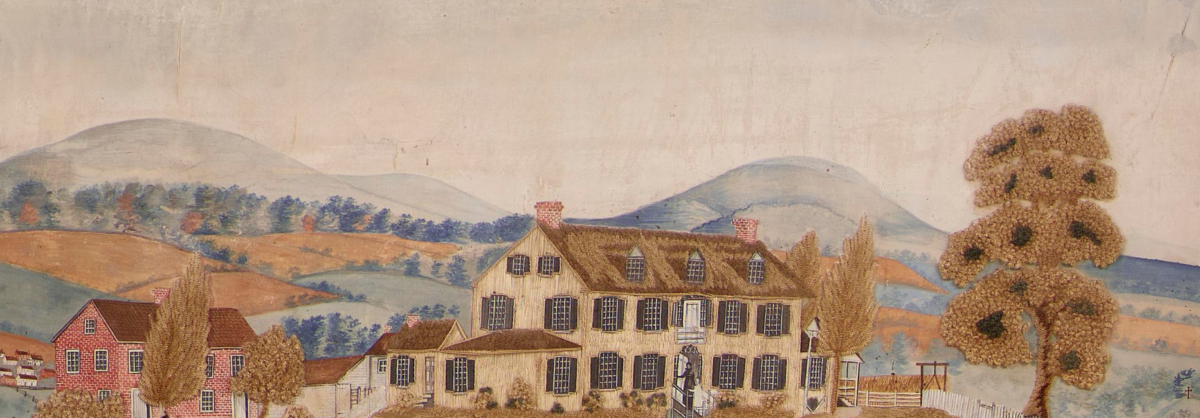This article was originally published here.
Emmitsburg, Md. — Upon an initial glance, Barbara Motter’s needlework portrait depicts an idyllic scene of rustic, rolling hills and the valley of Emmitsburg, Maryland, providing a snapshot into early-19th-century life. In center frame is the “White House” of St. Joseph’s School — the first free U.S. Catholic school for female education staffed by religious women — of which Motter attended in the mid-1800s.
On a closer examination, among the flowers and other design elements, is a prominently placed white steepled structure — most likely the Emmitsburg Lutheran Church, which is fitting because Motter was a Lutheran attending a Catholic school.
Motter’s work is one of more than 20 pieces — dating from the early 1800s to the 1870s — that will be featured in “Fancywork: Early American Needlework from St. Joseph’s School,” an exhibit at the new $4-million museum at the National Shrine of St. Elizabeth Ann Seton. The museum and visitors center, which opens Sept. 22, tells the life story of Mother Seton through an immersive experience, examining her impact as the first native-born American to be canonized. The museum will feature state-of-the-art exhibits with artifacts, personal writings, digital interactive exhibits and hands-on activities for all ages.
The shrine, which attracts more than 50,000 people a year, is located on the site that Mother Seton started the first congregation of sisters in the U.S. and the first Catholic school for girls. The grounds still include the “White House,” the building in which Mother Seton lived, taught and worshipped, and a basilica that is home to her tomb. The shrine offers activities throughout the year, including its Junior History Interpreters program, in which volunteers — ages 8-16 — play real historical characters of St. Joseph’s School who share “their” lives and interact with guests.
